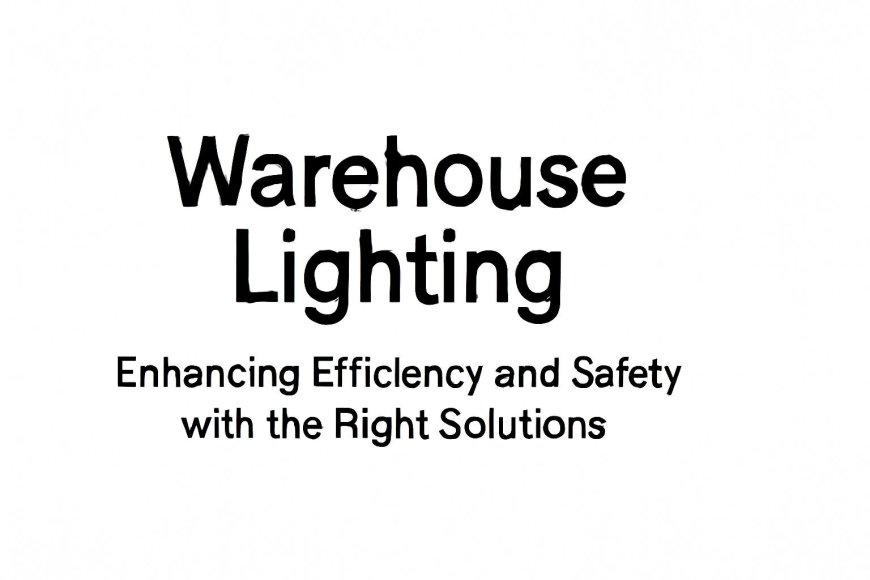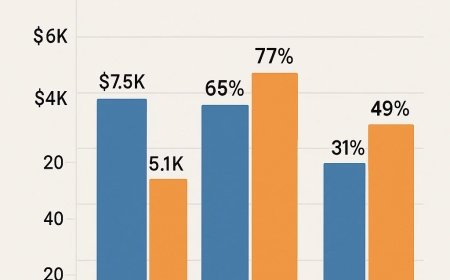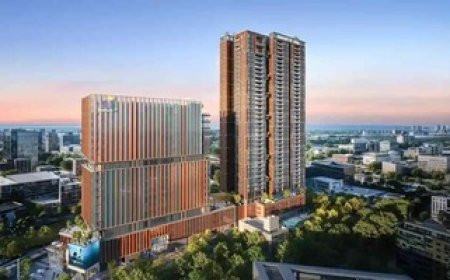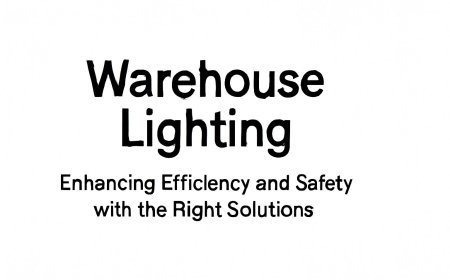Warehouse Lighting: Enhancing Efficiency and Safety with the Right Solutions
How effective warehouse lighting can improve productivity and safety. Learn about various lighting solutions, energy-saving tips, and safety considerations for warehouses

Introduction
Warehouse Lighting is a crucial element that often goes unnoticed in warehouse operations. Proper lighting not only enhances productivity but also plays a significant role in maintaining safety and reducing energy consumption. With the right lighting solutions, warehouses can create an environment that maximizes operational efficiency and protects workers.
In this blog, we will explore the importance of warehouse lighting, the different types of lighting options available, and how to implement the best lighting practices in your warehouse.
Why Warehouse Lighting Matters
When it comes to warehouse operations, lighting plays a critical role in several aspects:
-
Productivity: Well-lit warehouses allow workers to perform their tasks with greater accuracy and speed. Proper lighting helps reduce the risk of errors and minimizes downtime, which is essential for maintaining smooth operations.
-
Safety: Poor lighting can lead to accidents, injuries, and even operational mishaps. Adequate lighting ensures that workers can see clearly and move around safely, especially in high-traffic areas or zones where heavy machinery is in use.
-
Energy Efficiency: With the rising costs of energy, energy-efficient lighting solutions are becoming increasingly important. By selecting the right lighting systems, warehouses can reduce energy consumption, leading to lower utility bills and a smaller environmental footprint.
Types of Warehouse Lighting
There are several types of lighting options available for warehouses. The choice of lighting depends on factors such as the layout, purpose of the warehouse, and the budget.
-
LED Lighting
LED lighting is the most popular and energy-efficient option for warehouses. LEDs consume less power than traditional lighting systems, which leads to substantial savings on energy bills. They also have a longer lifespan, reducing the need for frequent replacements.
Benefits of LED lighting in warehouses:
-
Energy-efficient
-
Long lifespan (up to 50,000 hours)
-
Provides bright, even illumination
-
Low heat emission
-
Fluorescent Lighting
Fluorescent lighting has been a standard choice for warehouse lighting for years. It offers a good balance of brightness and energy efficiency. However, fluorescent bulbs are not as long-lasting as LEDs and can lose their brightness over time.
Benefits of fluorescent lighting:
-
Affordable initial cost
-
Good for general lighting
-
Energy-efficient compared to incandescent bulbs
-
Metal Halide Lighting
Metal halide lights are another common option in warehouses, particularly for high-ceiling areas. They produce bright, white light and are known for their excellent color rendering capabilities. However, they consume more energy than LEDs and have a shorter lifespan.
Benefits of metal halide lighting:
-
High brightness
-
Good color rendering
-
Ideal for high-ceiling warehouses
-
High-Pressure Sodium Lighting
High-pressure sodium lights are often used in large, industrial warehouses. While they are energy-efficient and produce a warm, yellowish light, they are not ideal for environments requiring precise color rendering.
Benefits of high-pressure sodium lighting:
-
Energy-efficient
-
Long lifespan
-
Suitable for large areas
Lighting Placement and Design Considerations
To ensure that your warehouse is well-lit, proper lighting placement and design are essential. Below are some key factors to consider when planning your warehouse lighting:
-
High Ceilings
Warehouses with high ceilings often require specialized lighting to ensure adequate light levels. For these areas, high-bay LED lights or metal halide lights can be used to illuminate large spaces. Installing lights with a wide beam angle can help distribute light evenly across the entire floor area.
-
Work Zones
Different work zones in the warehouse may require different lighting intensities. For instance, areas where workers handle delicate products or operate heavy machinery may need brighter, more focused lighting. On the other hand, storage areas may require less intense lighting.
-
Emergency Lighting
In case of power outages, warehouses should be equipped with emergency lighting. This lighting helps guide workers to exits safely and reduces the risk of accidents during evacuation. Emergency lighting systems can be powered by batteries or generators, ensuring that the lights remain operational even during a power failure.
-
Lighting Controls
To further optimize energy usage, warehouses can install lighting control systems. These systems allow managers to adjust the brightness of the lights based on the time of day, occupancy, and activity levels. For example, dimming lights in less-used areas can help save energy without compromising safety.
Energy-Saving Tips for Warehouse Lighting
Energy consumption is one of the biggest concerns for warehouses when it comes to lighting. Here are some practical tips for improving energy efficiency:
-
Use Motion Sensors
Motion sensors can automatically turn lights on or off based on the presence of workers. This ensures that lights are only on when needed, reducing unnecessary energy consumption.
-
Opt for LED Retrofit Kits
If your warehouse currently uses outdated lighting systems, retrofitting them with LED kits can be an easy and cost-effective way to upgrade to energy-efficient lighting.
-
Take Advantage of Daylight
Incorporating natural light into your warehouse design can help reduce the need for artificial lighting. Installing skylights, large windows, or light tubes can bring in more daylight, which is especially useful in the daytime.
-
Implement Lighting Maintenance Plans
Regular maintenance of your lighting system can help ensure that it is functioning at its best. Clean light fixtures, replace damaged bulbs, and check for any faults to avoid unnecessary energy wastage.
Warehouse Lighting and Worker Comfort
Its not just about lighting for productivity and safetyworker comfort also plays a role in warehouse lighting. Poor lighting can lead to eye strain, fatigue, and headaches, which can negatively impact the performance of your staff.
To ensure worker comfort:
-
Use lights that provide even illumination without harsh shadows.
-
Avoid flickering lights, which can cause discomfort and distraction.
-
Choose lights with a color temperature that mimics natural daylight, as this can help reduce eye strain.
Conclusion
Warehouse lighting is an essential part of creating a productive and safe working environment. By choosing the right lighting solutions and implementing energy-saving practices, warehouses can improve their operations, reduce costs, and ensure the well-being of their employees. Whether upgrading to LED lighting, optimizing lighting placement, or installing energy-efficient controls, the right lighting choices can have a lasting impact on warehouse efficiency.
For warehouse owners and managers looking to make the best lighting choices, investing in quality lighting solutions is an investment in long-term success. Take the time to assess your lighting needs and explore the various options available to find the best solution for your warehouse.
Call to Action:
If you're looking for expert advice or installation of high-quality warehouse lighting solutions, contact us today. Our team can help you choose the best lighting system that fits your needs and budget, ensuring improved productivity and safety for your warehouse.








&srotate=0)

























